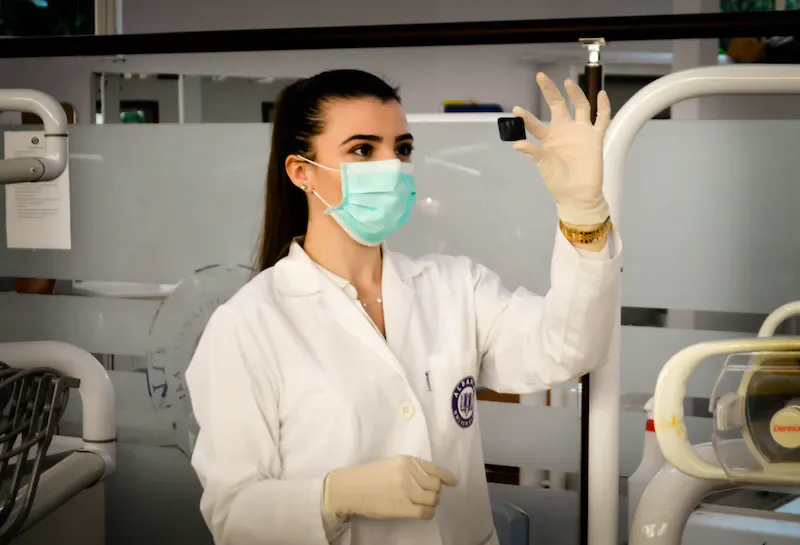Dont Let Noise Rob You of Your Hearing: Protect Your Ears Today

The Importance of Protecting Your Hearing
Noise-induced hearing loss is a serious and irreversible condition that can occur from exposure to loud noise over time. It can affect anyone, regardless of age or occupation, and can have a significant impact on a person’s quality of life. The good news is that noise-induced hearing loss is preventable by taking simple steps to protect your hearing.
One of the most effective ways to protect your hearing is to limit your exposure to loud noise. This can be done by wearing earplugs or earmuffs when you are in noisy environments such as concerts, construction sites, or when using power tools. Additionally, you can turn down the volume on your electronic devices or use noise-cancelling headphones.
It’s important to recognize the signs of hearing damage and take action if you experience them. These signs include a ringing or buzzing in your ears, muffled or distorted hearing, and difficulty understanding speech in noisy environments. If you notice any of these symptoms, it’s crucial to see a healthcare professional and have your hearing tested.
Protecting your hearing should be a priority for everyone. By taking simple steps to limit your exposure to loud noise and recognizing the signs of hearing damage, you can prevent noise-induced hearing loss and enjoy a better quality of life.
The prevalence of hearing loss globally and its projected increase by 2030
Hearing loss is a major health concern worldwide, and its prevalence is expected to increase in the coming years. According to recent estimates, approximately 466 million people worldwide have disabling hearing loss, which is defined as hearing loss greater than 40 decibels in the better hearing ear. This figure is expected to increase to 630 million by 2030 and 900 million by 2050.
There are several reasons why the prevalence of hearing loss is projected to increase. Firstly, the global population is aging, and age-related hearing loss is a common condition that affects many older adults. Secondly, noise-induced hearing loss, which is caused by exposure to loud noise, is becoming more common due to the increased use of personal listening devices and exposure to loud noise in occupational and recreational settings.
The economic and social costs of hearing loss are significant, as it can have a negative impact on a person’s ability to communicate, work, and participate in social activities. It is important to take steps to prevent hearing loss and to seek treatment if hearing loss is suspected. This includes protecting your ears from loud noise, getting regular hearing check-ups, and seeking treatment if hearing loss is detected.
How noise-induced hearing loss occurs and its impact on our ability to hear
Noise-induced hearing loss occurs when the hair cells in our inner ear are damaged by loud sounds. These hair cells are responsible for transmitting sound information to our brain. When they are damaged, they can’t be repaired or replaced, resulting in permanent hearing loss.
The impact of noise-induced hearing loss on our ability to hear can be significant. It can affect our ability to understand speech, particularly in noisy environments, and make it difficult to hear certain high-pitched sounds. It can also cause tinnitus, which is a ringing or buzzing in the ears that can be very distressing.
The risk of noise-induced hearing loss can be reduced by taking measures to protect our hearing, such as wearing earplugs or earmuffs in loud environments and keeping the volume down when listening to music or using headphones. By taking these steps, we can help to preserve our hearing and reduce the risk of hearing loss in the future.
The Anatomy of the Ear and How Sound is Processed
Our ability to hear depends on the complex structure of our ears. There are three main parts of the ear: the outer ear, the middle ear, and the inner ear.
The outer ear consists of the visible part of the ear, known as the pinna, and the ear canal. When sound waves enter the ear canal, they cause the eardrum to vibrate, which then causes the three tiny bones in the middle ear to vibrate as well.
These three bones, the malleus, incus, and stapes, increase the sound vibrations and transmit them to the inner ear. The inner ear is where sound is processed and converted into electrical signals that are sent to the brain via the auditory nerve.
The inner ear consists of two main structures: the cochlea and the vestibular system. The cochlea is responsible for processing sound, while the vestibular system is responsible for maintaining our balance and spatial orientation.
Within the cochlea, there are tiny hair cells that are responsible for converting sound vibrations into electrical signals. These hair cells are very delicate and can be easily damaged by exposure to loud noises, leading to permanent hearing loss.
Understanding the anatomy of the ear and how sound is processed is crucial to understanding the importance of protecting our hearing. By taking steps to prevent noise-induced hearing loss, we can preserve our ability to hear and maintain our quality of life.
The specific frequencies that are affected by noise-induced hearing loss
Noise-induced hearing loss can affect different frequencies of sounds differently. This is because the hair cells in the inner ear that are responsible for detecting different frequencies of sounds can be damaged by different levels of noise. Generally, exposure to noise at 85 decibels or higher for an extended period of time can cause damage to hair cells and result in hearing loss. High-frequency sounds, such as those in the range of 4,000 to 6,000 hertz, are typically the first to be affected by noise-induced hearing loss. However, as exposure to loud noise continues, other frequencies can also be affected, and hearing loss can become more severe. It’s important to note that noise-induced hearing loss can be preventable by taking simple measures, such as using earplugs or earmuffs when in noisy environments.
The negative effects of hearing loss on our social life and mental health
Hearing loss can have a significant impact on our social life and mental health. It can lead to feelings of social isolation, as communication with others becomes more difficult. This can cause a decrease in participation in social activities, and eventually, depression and anxiety.
Hearing loss can also make it difficult to communicate with loved ones, causing strained relationships and emotional stress. It can also lead to a decrease in cognitive abilities, making it more difficult to remember things and concentrate on tasks.
In addition to the social and emotional impact, hearing loss can also have physical consequences, such as an increased risk of falls and accidents due to impaired spatial awareness.
It’s important to prioritize hearing health and seek treatment if you suspect you may be experiencing hearing loss. This can help to prevent these negative effects and improve overall quality of life.
Protecting Your Hearing: Preventative Measures
Noise-induced hearing loss is a preventable condition. There are several things that you can do to protect your hearing and prevent this condition from developing. The first step is to avoid exposure to loud noises as much as possible. When you are in an environment where there is loud noise, consider using earplugs or noise-cancelling headphones to protect your ears.
Another way to protect your hearing is to be mindful of the volume level when using headphones or earbuds. Keep the volume at a reasonable level and take breaks to give your ears a rest.
In addition to these measures, it’s also important to maintain a healthy lifestyle. Regular exercise and a balanced diet can improve circulation and promote overall ear health.
By taking these preventative measures, you can protect your hearing and reduce your risk of developing noise-induced hearing loss. Remember that hearing loss is irreversible, so it’s essential to take care of your hearing and prevent this condition from occurring in the first place.
Proper technique for wearing earplugs and the importance of selecting the correct size and shape
When it comes to using earplugs as a preventative measure against noise-induced hearing loss, it’s important to use the right size and shape of earplugs to ensure they fit properly in your ear. The video explains that earplugs come in a variety of shapes and sizes, and some are designed specifically for certain activities such as swimming or sleeping.
To properly insert earplugs, the video suggests rolling them into a small, tight cylinder, then pulling your ear back with your opposite hand to create a straightened ear canal. Insert the earplug and hold it in place until it expands to fill the ear canal.
It’s also important to note that earplugs should be inserted with clean hands to avoid introducing bacteria into the ear. Additionally, earplugs should be replaced regularly and should not be reused or shared with others.
Conclusion
Noise-induced hearing loss is a serious and growing problem, affecting people of all ages and backgrounds. However, the good news is that it is preventable. By taking simple measures such as turning down the volume, wearing earplugs, and selecting the correct size and shape of earplugs, we can protect our hearing and prevent noise-induced hearing loss.
It is important to recognize the negative effects that hearing loss can have on our social life and mental health. The ability to communicate effectively with others is essential to our well-being and quality of life. Therefore, protecting our hearing should be a top priority.
Understanding the anatomy of the ear and how sound is processed is crucial to preventing noise-induced hearing loss. Knowing the specific frequencies that are affected by noise-induced hearing loss can help us identify which sounds we need to protect ourselves from.
As we have seen, the prevalence of hearing loss globally is projected to increase by 2030. This is a worrying trend, and we must take action to prevent it. By following the preventative measures outlined in this post, we can protect our hearing and contribute to the reduction of noise-induced hearing loss worldwide.
Remember, our hearing is a precious gift, and we must take care of it. By making small changes in our daily lives, we can prevent noise-induced hearing loss and enjoy a lifetime of good hearing.

